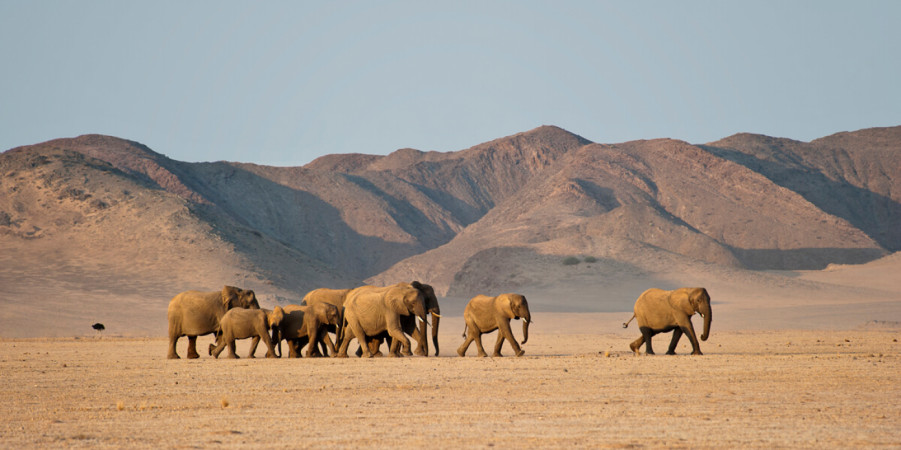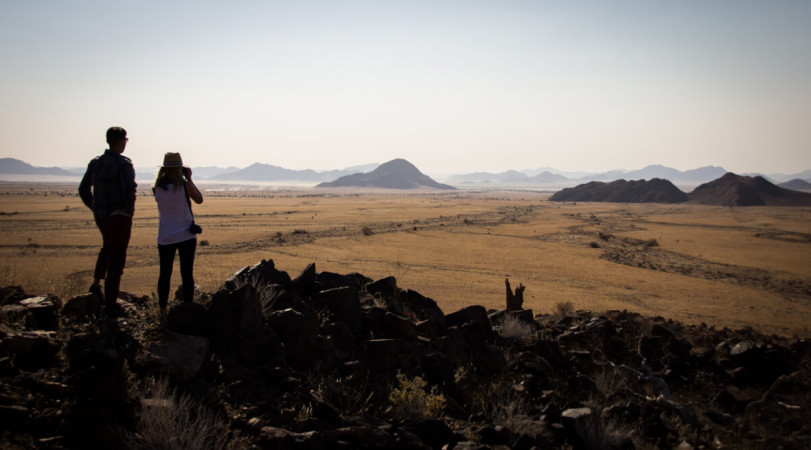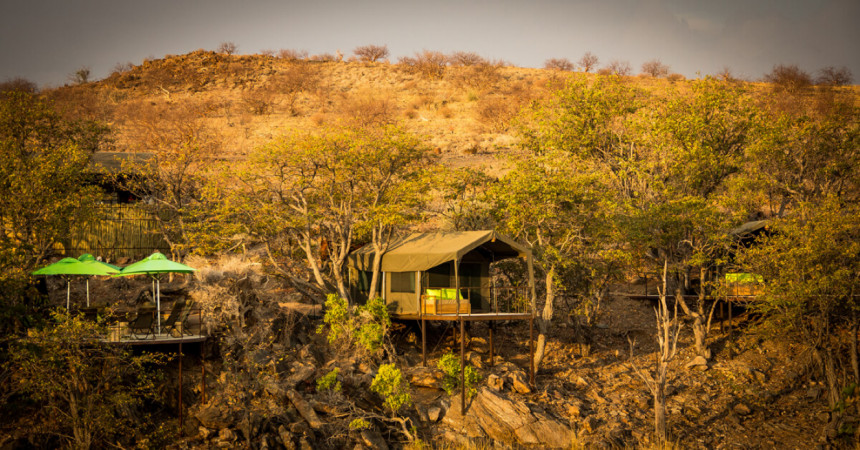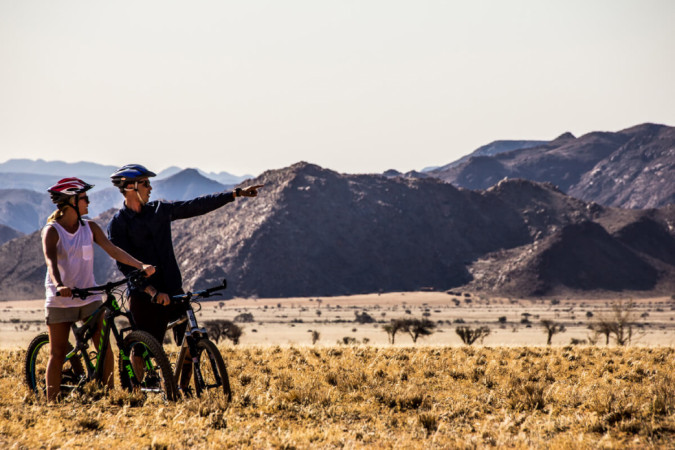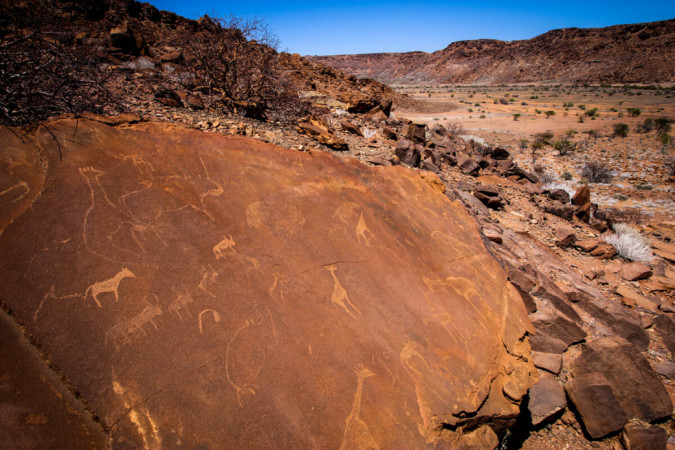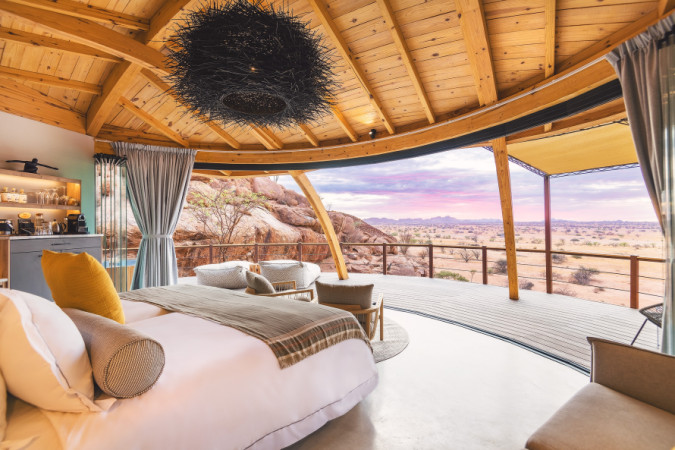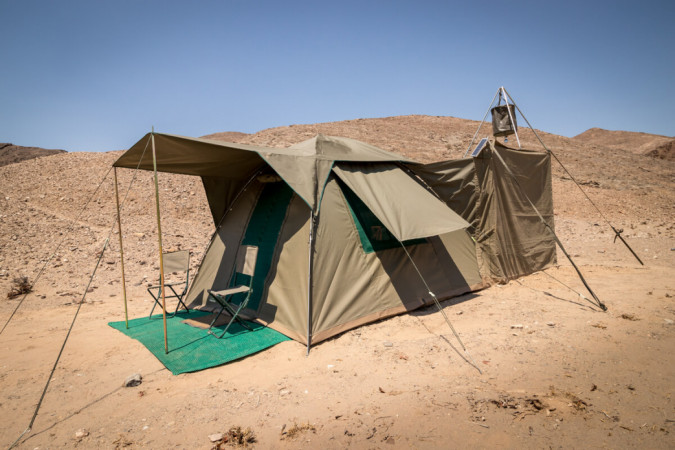Scheduled Group
Ultimate Namibia Safari 2026
9 Day Guaranteed Departure Accommodated Safari In 2026 from N$ 99,425.00 pp sharing
Namibia is a vast country, even by African standards, covering an area approximately twice the size of California and four times the size of the United Kingdom, but with a population of a mere 2 million. This gives one of the lowest population densities in the world. It is also an 'ageless land’; visible through our heritage of rock art created by stone-age artists and geological attractions such as the petrified forest where fossilised tree trunks have lain for over 280 million years. When added to the space and silence, these factors all contribute to a feeling of antiquity, solitude and wilderness.
The climate is typical of a semi-desert country. Days are warm to hot and nights are generally cool. Temperatures are modified by the high plateau in the interior and by the cold Benguela Current that runs along the Atlantic coastline. Except for the first few months of the year, the country is generally dry with very little rain.
This Ultimate Namibia Safari affords you the chance to experience this magnificent and memorable country in a very personal way. You will have your own professional and experienced safari guide who will enhance your enjoyment of this unique country by making it a fascinating and stress-free journey of discovery amidst very dramatic scenery. The knowledge, experience, and character of our guides are critical to a successful safari which is why we ensure that they are both personable and very professional. Your Ultimate Safaris guide will have an intimate knowledge of each area and camp/lodge that you visit, allowing them to share the local insights and highlights whilst adding continuity and depth to your safari. It goes without saying that they all know exactly what a "True African Safari" is all about. Not only are our guides highly qualified, each has a specific area of expertise. Together they possess the breadth and depth of knowledge to allow them to answer questions and satisfy the particular interests of each of our guests. The presence and company of your Ultimate Safaris guide will turn your safari into an experience of a lifetime!
PRE & POST SAFARI ACCOMMODATION & TRANSFERS
Please contact us to arrange all your pre and post-safari accommodation in Windhoek as well as any airport transfers that may be needed. These are not included in the safari fare so they will have to be charged additionally. We recommend the following establishments in Windhoek; Galton House, Olive Grove Guesthouse and The Weinberg Hotel.
TRIP HIGHLIGHTS
• Travel with one of Namibia’s most reputable and well-known naturalist guides.
• Stay in inside the world’s 4th largest National Park and enjoy early morning access to the dunes.
• Climb some of the world’s highest free-standing sand dunes.
• Sea Kayak with seals and dolphins on the Skeleton Coast (alternative option Catamaran Marine Excursion).
• Track for desert-adapted elephants in ephemeral river systems.
• Visit the UNESCO World Heritage Site at Twyfelfontein.
• Memorable and exciting guided game drive within the renowned Etosha National Park, from the vantage point of a specially modified, air conditioned 4x4 with pop tops.
• Game drives on the private Etosha Heights Reserve
Namibia Untold Safari
9 Day Guaranteed Departure Accommodated Safari In 2026 from N$ 96,329.00 pp sharing
Namibia is a vast country, even by African standards, covering an area approximately twice the size of California and four times the size of the United Kingdom, but with a population of a mere 2 million. This gives one of the lowest population densities in the world. It is also an 'ageless land’; visible through our heritage of rock art created by stone-age artists and geological attractions such as the petrified forest where fossilised tree trunks have lain for over 280 million years. When added to the space and silence, these factors all contribute to a feeling of antiquity, solitude and wilderness. The climate is typical of a semi-desert country. Days are warm to hot, and nights are generally cool. Temperatures are modified by the high plateau in the interior and by the cold Benguela Current that runs along the Atlantic coastline. Except for the first few months of the year, the country is generally dry with very little rain.
The NAMIBIA UNTOLD SAFARI affords you the chance to experience this magnificent and memorable country in a very personal way. You will have your own professional and experienced safari guide who will enhance your enjoyment of this unique country by making it a fascinating and stress-free journey of discovery amidst very dramatic scenery. The knowledge, experience, and character of our guides are critical to a successful safari which is why we ensure that they are both personable and very professional. Your Ultimate Safaris guide will have an intimate knowledge of each area and camp/lodge that you visit, allowing him to share local insights and highlights whilst adding continuity and depth to your safari. Our guides know exactly what an immersive and life enriching journey is all about. All are highly experienced, and each has a specific area of expertise. They therefore possess the breadth and depth of knowledge to allow them to answer questions and satisfy the interests of each of our guests. The presence and company of your Ultimate Safaris naturalist guide will make your safari ‘an experience of a lifetime!
The camps and areas visited on this safari offer a truly immersive, remote, and largely private experience with the emphasis being on the experiential aspect allowing you to go back to the roots of safari, to touch, to smell, to feel and to experience the wild with your feet firmly in the dust that covers Africa. You will also have first hand experience of the impact that these camps have on the areas in which they are located, and to see some of Namibia’s successful conservation initiatives, including rhino conservation, community empowerment and the rewilding and protecting of desert landscapes. You will learn more about the ongoing research and conservation projects happening on the Etosha Heights Reserve, and you will also embark on a rhino activity supported by Save The Rhino Trust. In the latter, you will accompany Rhino Rangers searching for some of the last free-roaming black rhino population in a newly established blueprint conservation area, the Doros Joint Management Area, much of which is still very much NAMIBIA UNTOLD. Namibia is home to the only desert adapted black rhinoceros population that remains in the wild, unfenced and outside reserves, occupying an arid range in the western Kaokoveld.
You end your safari with a stay at a desert retreat on the Namib Tsaris Conservancy, which was founded in 2010, serving as a natural buffer from the harshest desert conditions and a refuge that is vital to wildlife through the dry season. Twelve years of intensive work to reverse sixty years of inappropriate farming practices, including the removal of 89 km of internal fencing, the installation of wildlife watering points, the improvement of road networks, the rehabilitation of land and the reintroduction of wildlife that historically occurred here has resulted in one of the most picturesque and ecologically sound tracts of land in the area.
Join us on a journey that is truly NAMIBIA UNTOLD
Trip Highlights
- Travel with one of Namibia’s most reputable and well-known naturalist guides
- Memorable and exciting guided game drives within the renowned Etosha National Park, from the vantage point of a specially modified, air conditioned 4x4 with pop tops
- Game drive on the private Etosha Height Reserve
- Explore the Damaraland region whilst staying at Camp Doros.
- Search for desert adapted elephant in ephemeral river systems.
- Track for the endangered black rhino in conjunction with Save the Rhino Trust.
- Visit and explore Namibia’s central coastal region with canyons, dunes and lagoons.
- Explore the private Namib Tsaris Conservancy on exploratory nature drives and guided walks whilst staying at Camp Sossus.
- Climb some of the world’s highest free-standing sand dunes at Sossusvlei and enjoy a magic box picnic in the Namib Naukluft Park afterwards.
- Enjoy spectacular star gazing of the Milky Way on the Namib Tsaris Conservancy.
- Enjoy refreshing moments in desert pools on the Namib Tsaris Conservancy.
Pre & Post Safari Accommodation & Transfers
Please contact us to arrange all your pre and post-safari accommodation in Windhoek or Okonjima as well as any airport transfers that may be needed. These are not included in the safari fare so they will have to be charged additionally. We recommend the following establishments in Windhoek; Galton House, Olive Grove Guesthouse and Am Weinberg.

Our Retreats
Our retreats are conservation impact investments, pioneering environmental sustainability, community development and conservation.
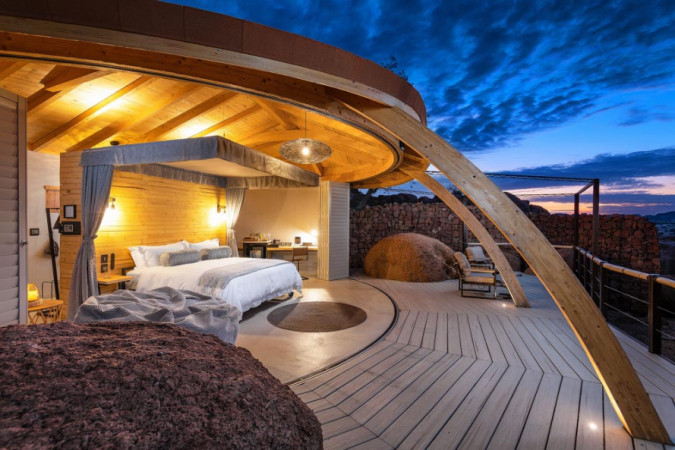
Onduli Ridge
Signature Retreat
Onduli Ridge, named after the resident giraffe of the area, is built at the base of two south facing granite outcrops which are connected by a ridge.
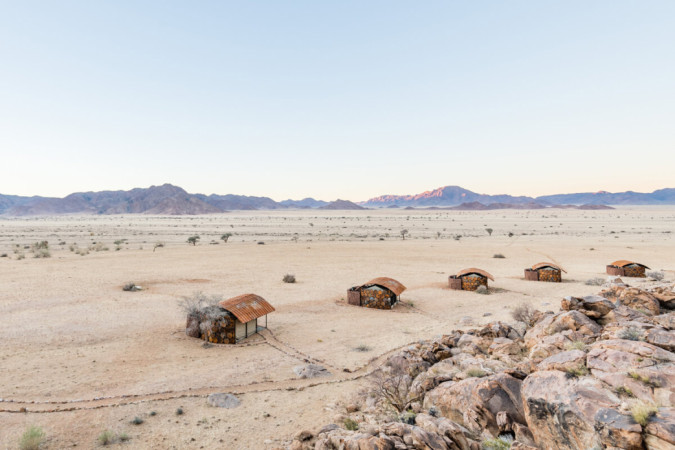
Camp Sossus
Immersive Exploration Retreats
Camp Sossus is built in a naturally formed amphitheatre of a south-facing granite outcrop within striking distance of So
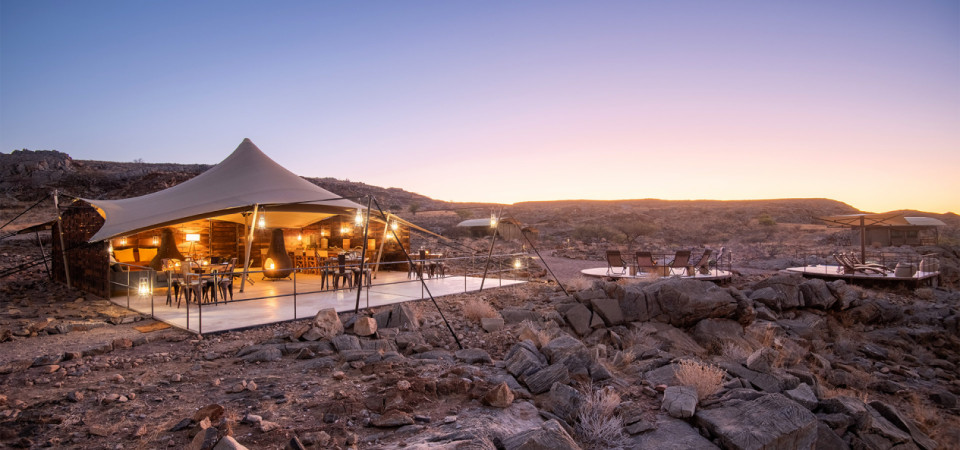
Camp Doros
Immersive Exploration Retreats
Camp Doros is deliberately small and intimate, and it is located in a core area for desert adapted black rhino with activities largely focused on finding the black rhino with an experienced and qualified Rhino Ranger team.
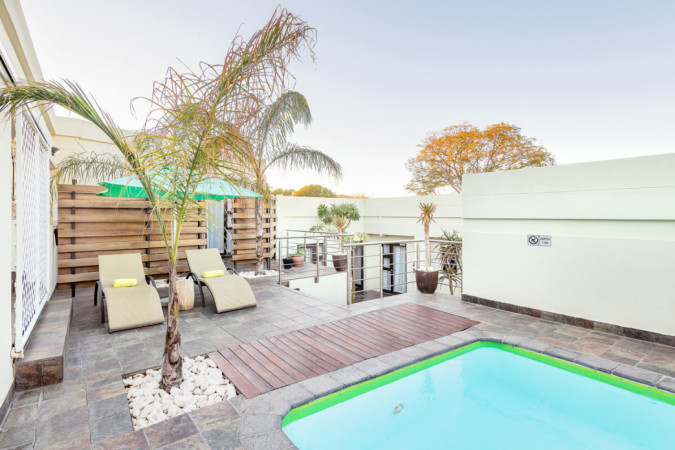
Galton House
Urban Retreat
Located in Windhoek and named after the famous explorer Sir Francis Galton, Galton House has a relaxed but efficient sty
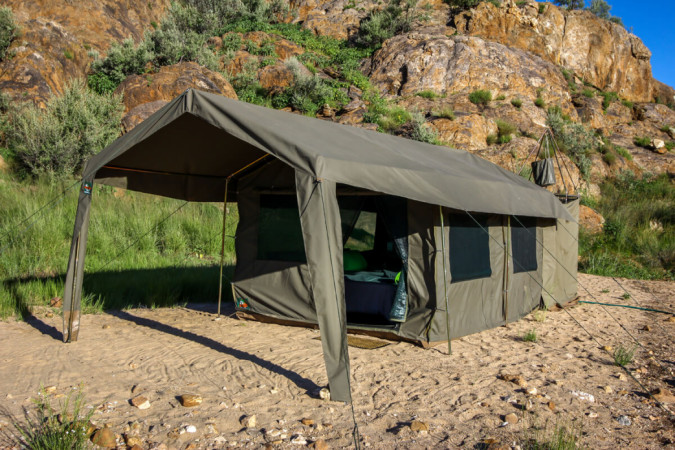
Meru Camp
Mobile Retreat
Rectangular Meru tents (4m x 3m and 2.5 m high) with built in groundsheets and mosquito screens on all doors and windows

